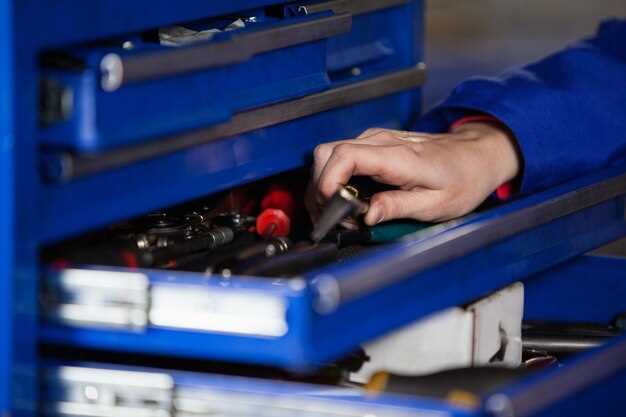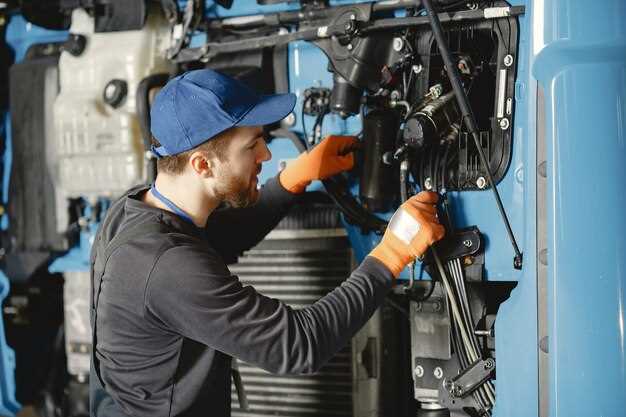
Replacing the battery in your truck might seem like a daunting task, but with the right knowledge and precautions, it can be a straightforward process. Understanding the importance of a reliable battery in your truck’s performance is essential. A strong battery not only powers the engine but also supports various electrical systems, ensuring that your vehicle runs smoothly.
In this guide, we will walk you through the safe steps to replace your truck’s battery effectively. We’ll highlight the necessary tools, safety measures, and detailed procedures to make the task simpler and safer. Following these steps not only helps prevent potential injuries but also protects your vehicle’s electronic components.
Whether you are a seasoned mechanic or a novice DIYer, learning how to replace your truck battery could save you both time and money. Let’s dive into the essential steps that will ensure a successful and secure battery replacement.
Choosing the Right Battery for Your Truck
Selecting the appropriate battery for your truck is crucial for optimal performance and longevity. Begin by determining the specifications required for your truck model. Refer to your owner’s manual for details on the recommended cold cranking amps (CCA) and reserve capacity (RC). These ratings ensure that your battery can start your engine in various weather conditions and sustain electrical loads.
Battery Type is another essential factor. The two main types are flooded lead-acid and absorbed glass mat (AGM). Flooded batteries are typically more affordable and widely available, but AGM batteries offer superior performance, especially in extreme temperatures and for trucks with advanced electrical systems.
Size and Compatibility is critical as well. Batteries come in various sizes, and it is essential to choose one that fits your truck’s battery tray correctly. Refer to the Group Size specification in your manual, ensuring proper fitment to prevent movement or disconnection.
Brand and Quality are paramount in battery selection. Opt for reputable brands known for reliability and warranty support. Consider batteries with a longer warranty period, as this often indicates better quality and performance expectations.
Lastly, price should be balanced with performance and longevity. While it may be tempting to choose the cheapest option, investing in a quality battery can save you money in the long run through higher efficiency and fewer replacements.
Step-by-Step Guide to Removing the Old Battery

Before you start, make sure you have the necessary tools: a socket wrench, gloves, and safety glasses. Begin by ensuring the vehicle is in park, the ignition is off, and the keys are removed. This will help prevent any accidental electrical discharge or movement.
Open the hood of your truck and locate the battery. Typically, it is situated near the front of the engine compartment. Identify the terminals: the positive terminal, usually marked with a “+” sign and often covered with a red cap, and the negative terminal, marked with a “-” sign and usually covered with a black cap.
Put on your gloves and safety glasses for protection. Start with the negative terminal. Using the socket wrench, loosen the nut on the negative terminal clamp. Once loose, carefully wiggle the clamp off the terminal post. Make sure not to touch any metal with the wrench once it’s in contact with the negative terminal.
Next, move to the positive terminal and repeat the process. Loosen the nut on the positive terminal clamp, then remove it from the terminal post. Again, avoid any body contact between the wrench and the truck’s metal parts.
With both terminals disconnected, locate the battery securing mechanism. This could be a bracket or a strap that holds the battery in place. Using the socket wrench, remove the bolts securing the battery. If necessary, check for any additional securing methods such as rubber straps or clips.
After the battery is free, carefully lift it out of the battery tray. Truck batteries are heavy, so use both hands and be mindful of your posture to prevent injury. Place the old battery in a safe location, ideally in a battery recycling area or a designated battery disposal site.
Inspect the battery tray and clean any corrosion or debris before proceeding to install the new battery.
Proper Installation Techniques for Your New Battery

Installing a new truck battery requires attention to detail to ensure optimal performance and safety. Start by gathering the necessary tools, including a wrench, socket set, and safety gloves. Ensure your truck is parked on a level surface with the engine turned off and keys removed from the ignition.
Before removing the old battery, take a moment to identify the battery terminals. The positive terminal is usually marked with a “+” sign, while the negative terminal bears a “-” sign. Always begin by disconnecting the negative terminal first to prevent any short circuits. Using your wrench, loosen the nut on the negative terminal and gently pull the cable away from the battery. Repeat the process for the positive terminal.
Carefully remove the old battery from its tray, taking care not to tilt it excessively, as this can spill acid if the battery is of the flooded type. Check the battery tray and clean it of any corrosion or debris before proceeding with the installation of the new battery.
When placing the new battery in the tray, ensure it is securely positioned and that the terminals are accessible. Connect the positive terminal first, sliding the cable over the terminal and tightening the nut with your wrench until secure. Proceed to attach the negative terminal in the same manner. It’s vital that both terminals are tightly connected to prevent battery issues.
After installation, double-check that all connections are firm. If your battery has a hold-down clamp, make sure to secure it, as this will prevent excessive movement while driving. Finally, conduct a visual inspection of the installation, ensuring there are no loose cables and that the battery is clean and properly positioned in the tray.
Dispose of the old battery responsibly by taking it to a recycling center or an automotive store that accepts used batteries. Proper battery installation guarantees reliable performance and extends the life of your truck’s electrical system.



